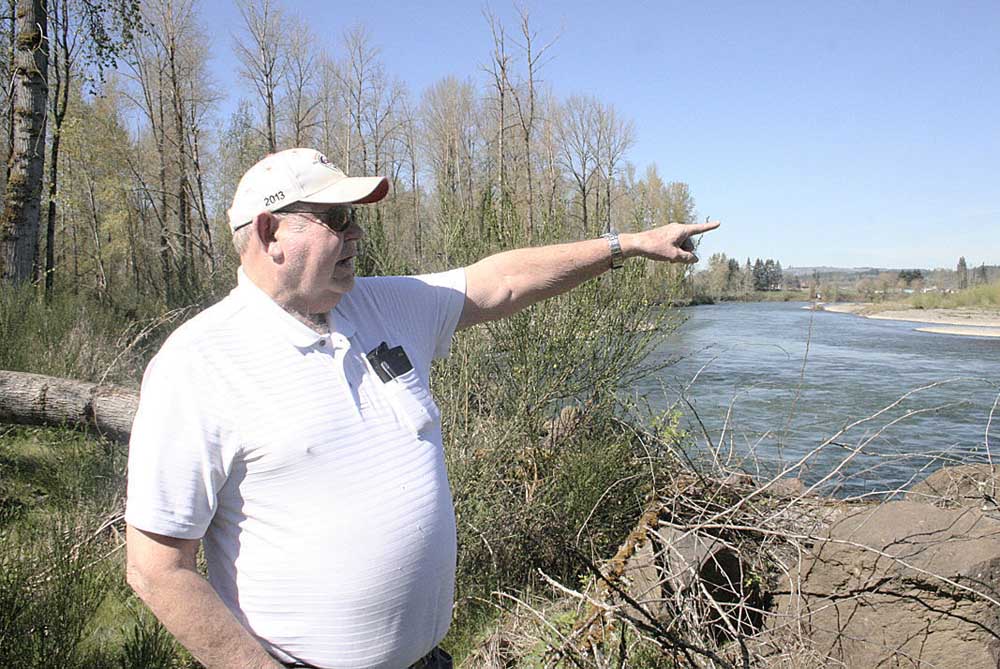Oregon farmer must pay EPA $100,000 penalty, remove rock embankments
Published 12:30 pm Friday, April 10, 2020

- Farmer Bill Case of Albany points to the North Santiam River, which abuts his farmland in this Capital Press file photo. The U.S. Environmental Protection Agency has settled a lawsuit against Case that accused him of unlawfully reinforcing the river bank.
To settle a federal Clean Water Act lawsuit, an Oregon farmer must pay a $100,000 civil penalty, remove two rock embankments and convert an 18-acre field into a forest.
The U.S. Environmental Protection Agency initially filed the complaint against farmer Bill Case, of Albany, four years ago, alleging he’d unlawfully reinforced the banks of the North Santiam River to prevent erosion.
The federal agency claimed Case had created rock levees along about 770 feet of the river in 2009 and another 1,000 feet in 2012 and 2013 without obtaining a Clean Water Act permit, which subjected him to penalties of up to $37,500 per day.
At the time, Case claimed the rock embankments were necessary to keep sediment from polluting the river and to prevent floodwaters from eventually eroding his 50-acre field.
Case argued that he’d relied on advice from the U.S. Army Corps of Engineers that the embankments wouldn’t fall under Clean Water Act jurisdiction as long as they were built outside the river.
However, in 2018, a federal judge ruled there was “ample evidence” that Case had broken the law by working below the river’s ordinary high water mark.
While the farmer had provided “sufficient evidence” of relying on government advice and being unaware of the need for a Clean Water Act permit, the judge said Case was still liable for violating the statute because he hadn’t shown the government had deliberately misguided him.
After prolonged negotiations, attorneys for Case and the EPA have now filed a proposed consent decree in the U.S. District Court for Oregon under which the farmer has agreed to pay the federal government a $100,000 civil penalty.
Under the deal, the farmer must also follow a restoration plan requiring him to remove the two “revetment structures” along the river and to implement an “additional project to mitigate for direct, indirect, cumulative and temporal impacts.”
Specifically, the plan will require Case to plant native trees and shrubs to re-establish a “riparian forest” in an 18-acre field that’s currently farmed. He must also remove an earthen plug to reconnect a side channel of the river with the main channel.
Removal of the rock embankments is expected to be completed this August while the mitigation project is expected to be done by August of next year. All other elements of the restoration plan are scheduled to be finished by November 2021.
Failure to comply with any requirements of the consent decree will result in penalties of $1,000 per day up to 30 days, $2,000 per day up to 60 days and $3,000 per day beyond 60 days.
Case said he’s been advised not to speak publicly about the case by his attorney, who could not be reached for comment.
Kent Hanson, the federal government’s attorney, said the proposed consent decree will be published in the Federal Register and opened up for public comment before it can be finalized in court, as required in Clean Water Act enforcement cases.
Hanson said he wasn’t permitted to speak about the merits of the case and referred questions to representatives of the EPA who weren’t available for comment as of press time.






